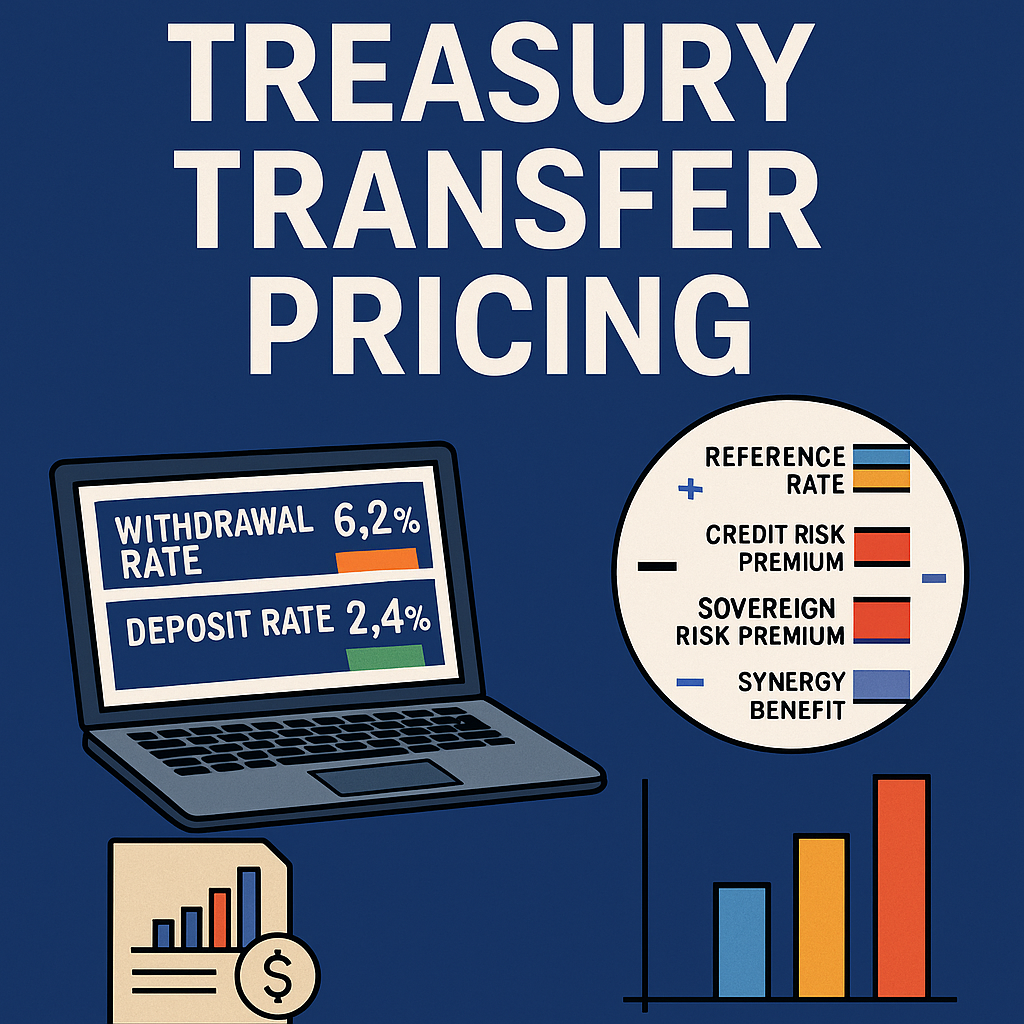Measuring risk is a critical component of effective risk management in treasury. Accurate risk measurement enables organizations to identify potential exposures, quantify their impact, and prioritize mitigation strategies. This chapter explores the techniques and tools used to measure various types of risks in treasury, including financial, operational, and compliance risks.
- Importance of Risk Measurement
- Informed Decision-Making: Quantifying risks provides a basis for choosing appropriate mitigation strategies.
- Resource Allocation: Helps prioritize risks based on their potential impact and likelihood.
- Regulatory Compliance: Ensures adherence to reporting standards and risk-related requirements.
- Strategic Planning: Aligns risk measurement with organizational goals and market dynamics.
- Techniques for Measuring Financial Risks
2.1 Value-at-Risk (VaR)
- Definition: Estimates the potential loss in value of a portfolio over a specific time frame, given normal market conditions.
- Applications:
- Measuring FX, interest rate, and commodity risks.
- Assessing the impact of market volatility on investment portfolios.
- Example:
- A company calculates a 5% VaR of $1 million, indicating a 5% chance of losing $1 million or more over a given period.
- Advantages:
- Widely accepted and easy to interpret.
- Applicable across asset classes.
- Limitations:
- Assumes normal market conditions, which may not apply in extreme scenarios.
2.2 Stress Testing
- Definition: Evaluates risk exposure under extreme but plausible scenarios.
- Applications:
- Assessing liquidity during market crises.
- Modeling the impact of sharp interest rate hikes.
- Example:
- Simulating the effect of a 20% depreciation in the company’s operating currency.
- Advantages:
- Highlights vulnerabilities not captured by traditional models.
- Encourages proactive risk management.
- Limitations:
- Relies on assumptions about extreme events.
2.3 Sensitivity Analysis
- Definition: Examines how changes in key variables affect financial outcomes.
- Applications:
- Assessing the impact of interest rate fluctuations on debt service costs.
- Evaluating how changes in raw material prices affect profit margins.
- Example:
- A company calculates that a 1% increase in interest rates will raise annual borrowing costs by $100,000.
- Advantages:
- Simple and intuitive.
- Highlights key drivers of risk.
- Limitations:
- Does not account for interdependencies between variables.
2.4 Scenario Analysis
- Definition: Explores multiple future scenarios to assess risk exposures and their potential impact.
- Applications:
- Evaluating cash flow risks under optimistic, baseline, and pessimistic economic scenarios.
- Example:
- Modeling three outcomes for a project based on varying commodity prices.
- Advantages:
- Provides a range of potential outcomes.
- Facilitates planning for both best- and worst-case scenarios.
- Limitations:
- Time-intensive and reliant on accurate assumptions.
2.5 Credit Risk Metrics
- Key Metrics:
- Probability of Default (PD): Likelihood that a counterparty will fail to meet its obligations.
- Loss Given Default (LGD): The proportion of exposure lost in case of default.
- Exposure at Default (EAD): The amount at risk when default occurs.
- Applications:
- Evaluating the creditworthiness of customers or counterparties.
- Stress testing portfolios for potential defaults.
- Example:
- A bank calculates an expected credit loss (ECL) of $2 million based on PD, LGD, and EAD.
- Advantages:
- Provides granular insights into credit exposures.
- Supports regulatory compliance.
- Limitations:
- Relies heavily on historical data, which may not predict future events.
- Techniques for Measuring Operational Risks
3.1 Key Risk Indicators (KRIs)
- Definition: Metrics that provide early warnings about potential operational risks.
- Examples:
- Frequency of payment errors.
- System downtime in hours.
- Advantages:
- Proactive and actionable.
- Easy to track and communicate.
- Limitations:
- Requires ongoing calibration to remain effective.
3.2 Risk Control Self-Assessments (RCSAs)
- Definition: Internal evaluations where teams identify and assess operational risks in their processes.
- Applications:
- Identifying gaps in payment workflows.
- Assessing cybersecurity vulnerabilities.
- Advantages:
- Encourages employee engagement and awareness.
- Tailored to the organization’s specific operations.
- Limitations:
- Subjective and may lack external validation.
3.3 Incident Analysis
- Definition: Analyzing past operational failures to identify root causes and assess risks.
- Applications:
- Investigating causes of fraud or data breaches.
- Evaluating systemic issues in payment processing.
- Advantages:
- Provides practical insights based on real-world events.
- Helps in preventing recurrence.
- Limitations:
- Reactive rather than proactive.
- Techniques for Measuring Compliance and Regulatory Risks
4.1 Compliance Risk Assessments
- Definition: Evaluating the likelihood and impact of non-compliance with regulations.
- Applications:
- Assessing risks related to anti-money laundering (AML) requirements.
- Evaluating tax compliance risks across jurisdictions.
- Advantages:
- Supports regulatory preparedness.
- Identifies gaps in policies and controls.
- Limitations:
- Requires expertise in legal and regulatory standards.
4.2 Audit Reports and Findings
- Definition: Independent reviews of compliance with laws and internal policies.
- Applications:
- Ensuring accurate financial reporting under SOX.
- Validating adherence to ESG standards.
- Advantages:
- Provides objective insights.
- Enhances transparency.
- Limitations:
- May not cover emerging risks in rapidly changing environments.
4.3 Regulatory Stress Testing
- Definition: Evaluating the organization’s resilience under regulatory-defined stress scenarios.
- Applications:
- Testing liquidity buffers under Basel III guidelines.
- Assessing systemic risk exposure in financial institutions.
- Advantages:
- Demonstrates compliance with regulatory expectations.
- Highlights areas requiring improvement.
- Limitations:
- Time- and resource-intensive.
- Tools for Risk Measurement
5.1 Treasury Management Systems (TMS)
- Centralized platforms for measuring market, credit, and liquidity risks.
5.2 Advanced Analytics Platforms
- Tools like Power BI, Tableau, and Python for data analysis and visualization.
5.3 Statistical Software
- Platforms such as R and SAS for complex risk modeling.
5.4 Regulatory Reporting Tools
- Automated systems for compliance with AML, EMIR, and Basel III requirements.
- Challenges in Risk Measurement
- Data Quality: Poor-quality data can lead to inaccurate risk measurements.
- Integration Issues: Siloed systems hinder comprehensive risk assessments.
- Rapid Market Changes: Static models may not capture dynamic risk environments.
- Regulatory Complexity: Evolving standards require continuous updates to methodologies.
Conclusion
Measuring risk is the foundation of effective risk management, enabling organizations to identify exposures and implement mitigation strategies. By leveraging techniques like VaR, stress testing, and scenario analysis, treasury teams can quantify risks and align their strategies with business goals. Tools such as TMS, advanced analytics platforms, and regulatory reporting systems enhance precision and efficiency in risk measurement. Subsequent chapters will explore how these techniques are applied in different risk categories and industries.








Leave a Comment
You must be logged in to post a comment.